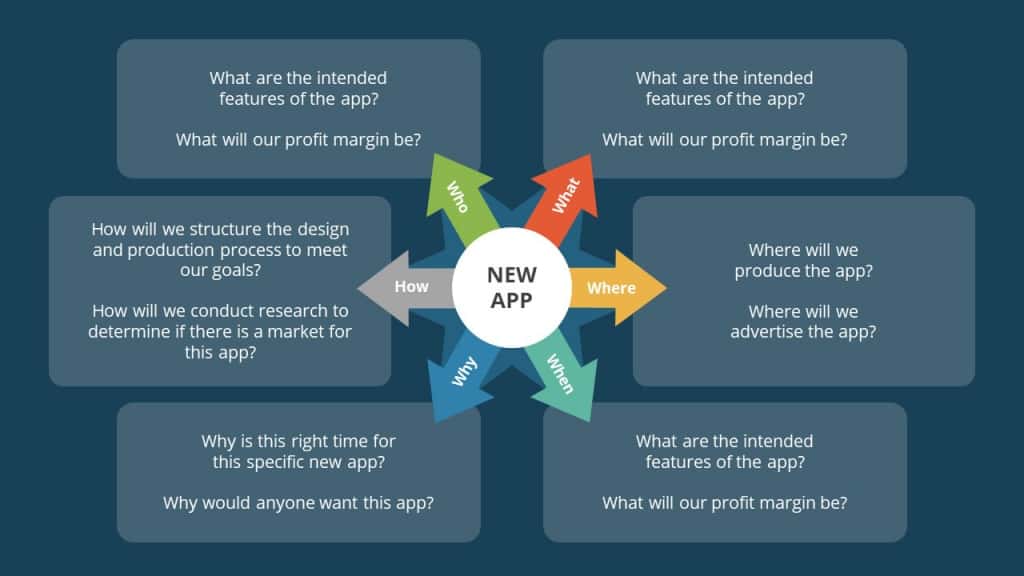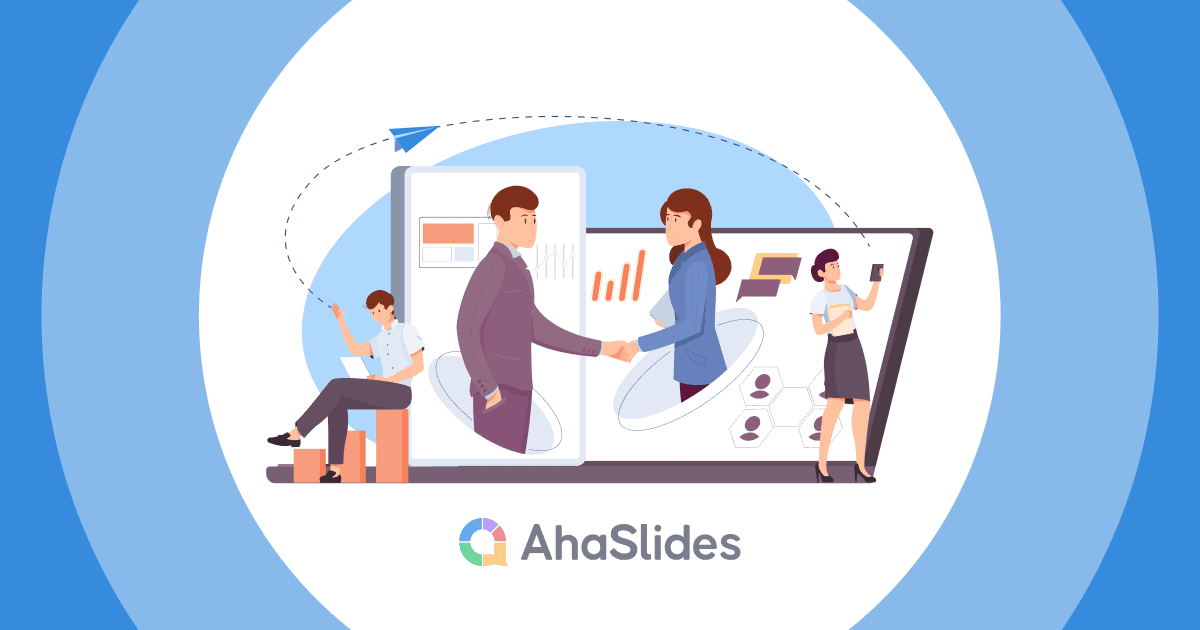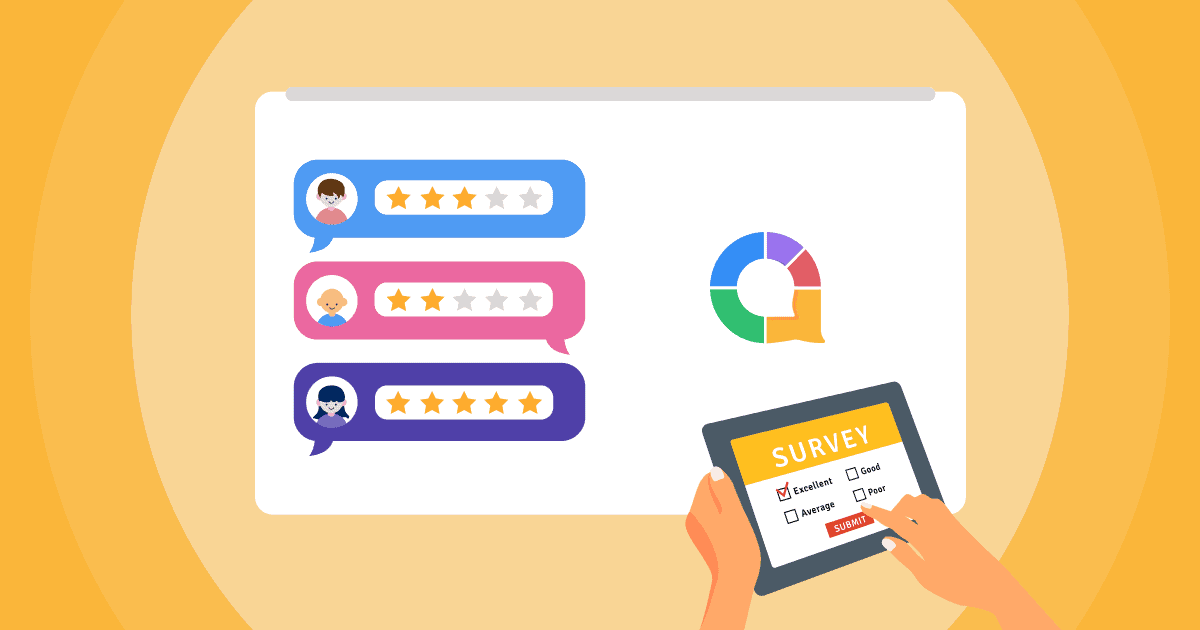Are you looking for product launch presentation example? The headlines below are just a tiny part of what you can find in the media just a couple of days after these brands delivered their product presentation. They all made it a success.
- ‘Tesla’s next-gen Roadster stole the show from the electric truck’, Electrek.
- ‘Moz unveils Moz Group, new product ideas at MozCon’, PR Newswire.
- ‘5 mind-boggling tech sneaks from Adobe Max 2020’, Creative Bloq.
So, what did they do both on stage and behind the scenes? How did they do it? And how can you nail your own product presentation just like them?
If you’re looking for answers to these questions, you’re in the right place. Take a look at the full guide for how to make a successful product presentation.
Ready to dive in? Let’s get started!
| What is the goal of the product presentation? | Match out customer's needs and features and benefits of product |
| What are the 5 P's in product presentation? | Planning, preparation, practice, performance, and passion |
| What a good product presentation should be? | Lots of colors and visuals |
Table of Contents
- What Is a Product Presentation?
- Why Is It Important?
- 9 Things in the Outline
- 6 Steps to Host
- 5 Examples
- Other Tips
- In A Few Words…
- Frequently Asked Questions
Tips from AhaSlides

Start in seconds.
Get free templates for your next interactive presentation. Sign up for free and take what you want from the template library!
🚀 Grab Free Account
What Is a Product Presentation?
A product presentation is a presentation you use to introduce your company’s new or renovated product, or a newly developed feature, for people to get to know more about it.
In this type of presentation, you’ll take your audience through what it is, how it works, and how it helps solve their problems.
For example, the Tinder pitch deck and Tesla's Roadster launch are both fascinating product presentations used in different ways. The former presented their product idea and the latter unveiled their final product.
So, who will you present for? As you can do this kind of presentation at different stages while developing your product, there are some common groups of audience:
- Board of directors, shareholders/investors - To this group, typically you’ll pitch a new idea to ask for approval before the whole team starts working on it.
- Colleagues - You can show a trial or beta version of the new product to other members of your company and collect their feedback.
- The public, potential & current customers - This can be a product launch, which shows your target audience everything they need to know about the product.
The person in charge of presenting is actually quite flexible and not necessarily the same one or role in every situation. That could be a product manager, a business analyst, a sales/customer success manager or even the CEO. At times, more than one person can be hosting this product presentation.
Why Is Product Presentation Examples Important?
A product presentation gives your audience a closer look at and deeper understanding of the product, how it works and what values it can bring. Here are some more benefits that this presentation can offer you:
- Raise awareness and grab more attention - By hosting an event like this, more people will know about your company and product. For example, Adobe hosts MAX (a creativity conference to announce innovations) in the same format every year, which helps to build the hype around their products.
- Stand out in the cutthroat market - Having great products isn’t enough as your company is in a tight race against other competitors. A product presentation helps set you apart from them.
- Leave a deeper impression on your potential customers - Give them another reason to remember your product. Maybe when they’re on the go and see something similar to what you’ve presented, it would ring a bell for them.
- A source for external PR - Ever noticed how Moz dominates the media coverage after their annual professional ‘marketing camp’ MozCon? CEO at the WhenIPost guest posting agency says: "You can get the source of external PR (but to a lesser extent, of course) by building better relationships with the press, your potential and current customers as well as other stakeholders."
- Boost sales and revenue - When more people have the chance to know about your products, it can bring you more customers, which also means more revenue.
9 Things in a Product Presentation Outline
To put it simply, a product presentation often involves a talk and slideshows (with visual aids like videos and images) to describe the features, benefits, market fit, and other relevant details of your product.
Let’s take a quick tour of a typical product presentation 👇

- Introduction
- Agenda
- Company Information
- Product Information
- Benefits of the Product
- Positioning Map
- Examples and Testimonials
- Call to Action
- Conclusion
#1 - Introduction
An introduction is the first impression people have of your product presentation, that’s why you should start strong and show people what they can expect to hear.
It’s never easy to blow the audience’s mind with an introduction (but you still can). So at least, try to get the ball rolling with something clear and simple, like introducing yourself in a friendly, natural and personal way (here’s how). A great start can boost your confidence to nail the rest of your presentation.
#2- Agenda
If you want to make this product presentation super-duper clear, you can give your audience a preview of what they’re going to see. This way, they will know how to follow better and not miss any important points.
#3 - Company Information
Again, you don’t need this part in every one of your product presentations, but it’s best to give the newcomers an overview of your company. This is so they can know a bit about your team, the field your company is working in or your mission before digging deeper into the product.
#4 - Product Introduction
The star of the show is here 🌟 It’s the main and most important section of your product presentation. In this part, you need to present and highlight your product in a way that wows the whole crowd.
There are many approaches when it comes to introducing your product to the crowd, but one of the most common and effective is the problem-solution method.
As your team has invested massive amounts of time in developing your product to meet the market’s demands, it’s essential to prove to your audience that this product can solve their problems.
Do some research, discover your customers’ pain points, list out some potential consequences and here comes a hero to the rescue 🦸 Emphasise that your product can do wonders for the situation and make it shine bright like a diamond, just like how Tinder did in their pitch deck many years ago.
You might give other approaches a try when presenting your product. Talking about its strengths and opportunities, which can be taken out from the familiar SWOT analysis, probably works well too.
Or you can answer the 5W1H questions to tell your customers all the basics of it. Try using a starbursting diagram, an illustration of these questions, to help you delve more deeply into your product.

#5 - Benefits of the Product
What else can your product do, aside from solving that particular problem?
What values can it bring to your customers and the community?
Is it a game-changer?
How is it different from other decent similar products on the market?
After grabbing the audience's attention on your product, poke into all the good things that it can bring about. It’s also vital to spotlight your product’s unique selling point to distinguish it from others. Your potential customers can then have a deeper understanding of what it can do for them and why they should use this product.
🎊 Check out: 21+ Icebreaker Games for Better Team Meeting Engagement | Updated in 2024
#6 - Positioning Map
A positioning map, which tells people the position of your product or service in the market compared to competitors, can help your company stand out in a product pitch. It also acts as a takeaway after laying out all the descriptions and benefits of your product and saves people from getting lost in loads of information.
If a positioning map doesn’t fit your product, you can choose to present a perceptual map, which illustrates how the consumers perceive your product or service.
In both of these maps, your brand or product is rated based on 2 criteria (or variables). It can be quality, price, features, safety, reliability and so on, depending on the type of product and the field it’s in.
#7 - Real-Life Product launch Presentation Examples and Testimonials
Everything you’ve said to your audience so far can sound like theories that go in one ear and out the other. That’s why there should always be a section of examples and testimonials to put the product in its real setting and etch it into the memories of your audience.
And if possible, let them see it in person or interact with the new product right away; it’ll leave a lasting impression on them. To make it more engaging, you should use more visuals on your slides during this phase, such as pictures or videos of people using, reviewing the product or mentioning it on social media.
✅ We have some real-life examples for you too!
#8 - Call to Action
Your call to action is something you say to encourage people to do something. It actually depends on who your audience is and what you want to achieve. Not everyone writes it on their face or says something directly like ‘you should use it’ to persuade people to purchase their product, right?
Of course, it’s still crucial to tell people what you expect them to do in a few short sentences.
#9 - Conclusion
Don’t let all your effort from the beginning stop in the middle of nowhere. Reinforce your key points and end your product presentation with a quick recap or something memorable (in a positive way).
Quite a huge load of work. 😵 Sit tight; we’ll walk you through everything in the simplest way possible to get you prepared.
6 Steps to Host a Product Presentation
Now you get what should be included in your product presentation, it’s time to start making one. But from where? Should you jump right into the first part of the stuff we outlined above?
The outline is a roadmap for what you will say, not what you will do to prepare. When there are a lot of things that need to be done, it can easily get you into a mess. So, check out this step-by-step guide to keep yourself from feeling overwhelmed!
- Set your goals
- Define audience needs
- Make an outline & prepare your content
- Choose a presenting tool & design your presentation
- Anticipate questions & prepare the answers
- Practice, practice, practice
#1 - Set your goals
You can define your goals based on who your audience members are and the purposes of your product presentation. These two factors also are your background to establish the style you’re going for and the way you present everything.
To make your goals more clear and achievable, set them based on the SMART diagram.

For example, at AhaSlides, we have product presentations among our big team quite often. Let’s imagine we’re having another one real soon and we need to set a SMART goal.
Here’s Chloe, our Business Analyst 👩💻 She wants to announce a recently developed feature to her colleagues.
Her audience is made up of colleagues who don’t directly build the product, like the ones from the marketing and customer success teams. This means that they’re not experts in data, coding or software engineering, etc.
You might think of a general goal, such as ‘everyone understands thoroughly about the developed feature’. But this is pretty vague and ambiguous, right?
Here’s the SMART goal for this product presentation:
- S (Specific) - State what you want to achieve and how to do so in a clear and detailed way.
🎯 Ensure that marketing & CS team members understand the feature and its values by giving them a clear introduction, a step-by-step guide and data charts.
- M (Measurable) - You need to know how to measure your goals afterwards. Numbers, figures or data can be of great help here.
🎯 Ensure that 100% of marketing & CS team members understand the feature and its values by giving them a clear introduction, a step-by-step guide and the key results of 3 important data charts (i.e. conversion rate, activation rate & daily active user).
- A (Attainable) - Your goal can be challenging, but don’t make it impossible. It should encourage you and your team to try and achieve the goal, not put it totally out of reach.
🎯 Ensure that at least 80% of marketing & CS team members understand the feature and its values by giving them a clear introduction, a step-by-step guide and the key results of 3 important data charts.
- R (Relevant) - Have a look at the big picture and check whether what you’re planning on doing will hit your goals directly. Try to answer why you need these goals (or even the 5 whys) to ensure everything is as relevant as possible.
🎯 Ensure that at least 80% of marketing & CS team members understand the feature and its values by giving them a clear introduction, a step-by-step guide and the key results of 3 important data charts. Because when these members know the feature well, they can make proper social media announcements and assist our customers better, which helps us build stronger relationships with customers.
- T (Time-bound) - There should be a deadline or a time frame to keep track of everything (and steer clear of any tiny bit of procrastination). When you finish this step, you’ll have the ultimate goal:
🎯 Ensure that at least 80% of marketing & CS team members understand the feature and its values before the end of this week by giving them a clear introduction, a step-by-step guide and the key results of 3 important data charts. This way, they can further work with our customers and maintain customer loyalty.
A goal can get quite big and sometimes make you feel too much. Remember, you don’t have to write down every part of your goal down; try and write it into one sentence and keep the remainder of it in mind.
You can also consider chunking down a long goal into smaller objectives to do one by one.
Check out: Use idea boards to brainstorm better for your next presentation!
#2 - Define audience needs
If you want your audience to stay focused and engaged in your presentation, you need to give them what they want to hear. Think about their expectations, what they need to know and what can keep them following your talk.
First thing first, you should discover their pain points via data, social media, research or any other reliable sources to have a solid background on the things you definitely need to mention in your product presentation.
In this step, you should sit down with your team and work together (maybe try a session with right brainstorm tool) to develop more ideas. Even though only a few people will be presenting the product, all the team members will still prepare everything together and will need to be on the same page.
There are some questions you can ask to understand their needs:
- What are they like?
- Why are they here?
- What keeps them up at night?
- How can you solve their problems?
- What do you want them to do?
- See more questions here.
#3 - Make an outline & prepare your content
When you know what you should say, it’s time to draft the main points to have everything in hand. A careful and coherent outline helps you stay on track and avoid overlooking anything or going too deep into a particular part. With this, you can have better flow and a good sense of time management, which also means fewer chances to go off-topic or deliver a wordy, rambling speech.
After finishing your outline, go through each point and decide exactly what you want to show your audience in that section, including images, videos, props or even sounding and lighting arrangements, and prepare them. Make a checklist to ensure that you and your team won’t forget anything.
#4 - Choose a presenting tool & design your presentation
Talking is not enough on its own, especially in a product presentation. That’s why you should give the audience something to look at, and maybe interact with, in order to liven up the room.
With slide decks, it’s not that easy to create something aesthetically pleasing or to create content that is interactive for your audience. Many online tools offer you some help with the heavy lifting of making, designing and customising an appealing presentation.

You can have a look at AhaSlides to create a more creative product presentation compared to using traditional PowerPoint. Besides slides with your content, you can try adding interactive activities that your audience can join easily with just their phones. They can submit their responses to random team generator, word cloud, online quiz, polls, brainstorming sessions, Q&As tool, spinner wheel and more.
💡Looking for more Powerpoint product presentation templates or alternatives? Check them out in this article.
#5 - Anticipate questions & prepare the answers
Your participants, or maybe the press, can ask some questions during your Q&A session (if you have one) or sometime after that. It would be really awkward if you couldn’t answer all questions related to the product that you’ve created, so try your best to avoid that situation.
It’s a good practice to put yourself in the audience’s shoes and look at everything from their perspective. The whole team can imagine being the audience members in that pitch and predicting what the crowd will ask, and then finding the best way to answer those questions.
🎉 Check out: 180 Fun General Knowledge Quiz Questions and Answers [2024 Updated]
#6 - Practice, practice, practice
The old saying still rings true: practice makes perfect. Practice speaking and rehearse a few times before the event takes place to make sure that your presentation is smooth.
You can ask a few colleagues to be your first audience and collect their feedback to revise your content and polish your presentation skills. Remember to have at least one rehearsal with all your slideshows, effects, lighting and sound system too.
5 Product Presentation Examples
Many giant companies have delivered great product presentations throughout the years. Here are some great real-life success stories and the tips we can learn from them.
#1 - Samsung & the way they started the presentation
Imagine sitting in a dark room, staring at the space in front of your eyes and boom! The light, the sounds, and the visuals hit all your senses directly. It’s loud, it’s eye-catching, and it’s satisfying. That is how Samsung made great use of video and visual effects to begin their Galaxy Note8 product presentation.
Alongside videos, there are many ways to start, like asking an intriguing question, telling a compelling story or using performance. If you can’t come up with any of these, don’t try too hard, just keep it short and sweet.
Takeaway: Start your presentation on a high note.
#2 - Tinder & how they laid out problems
As you’re presenting your product to ‘sell’ them to a cohort of people, it’s important to find out the thorns in their side.
Tinder, with their first pitch deck back in 2012 under the very first name Match Box, successfully pointed out a big pain point for their potential customers. Then they pledged that they could provide the perfect solution. It’s simple, impressive and can’t be any more entertaining.
Takeaway: Find the true problem, be the best solution and drive your points home!
#3 - Airbnb & how they let the numbers speak
Airbnb also used the problem-solution tactic in the pitch deck that granted this start-up a $600,000 investment a year after it first launched. A significant thing that you can notice is they used quite a lot of numbers in their presentation. They brought to the table a pitch that investors couldn’t say no to, in which they let their data gain trust from the audience.
Takeaway: Remember to include data and make it big & bold.
#4 - Tesla & their Roadster appearance
Elon Musk might not be one of the best presenters out there, but he definitely knew how to wow the whole world and his audience during Tesla's product presentation.
At the Roadster launch event, after a few seconds of impressive visuals and sounds, this new classy electric car appeared in style and took the stage to cheers from the crowd. There was nothing else on stage (except for Musk) and all eyes were on the new Roadster.
Takeaway: Give your product a lot of spotlights (literally) and make good use of effects.
#5 - Apple & the tagline for Macbook Air presentation in 2008
There’s something in the Air.
This was the first thing Steve Jobs said at MacWorld 2008. That simple sentence hinted at the Macbook Air and immediately caught everyone's attention.
Having a tagline reminds people of your product’s characteristics. You can say that tagline right at the beginning like Steve Jobs did, or let it appear a few times throughout the event.
Takeaway: Find a tagline or slogan that represents your brand and product.
Other Product Presentation Tips
🎨 Stick to one slide theme - Make your slides uniform and follow your brand guidelines. It’s a good way to promote your company’s branding.
😵 Don’t cram too much information on your slides - Keep things neat and clean, and don’t put walls of text on your slide. You can try the 10/20/30 rule: have a maximum of 10 slides; maximum length of 20 minutes; have a minimum font size of 30.
🌟 Know your style and delivery - Your style, body language and tone of voice matter greatly. Steve Jobs and Tim Cook had different styles on stage, but they all nailed their Apple product presentations. Be yourself, everyone else is already taken!
🌷 Add more visual aids - Some pictures, videos or gifs can help you grab people’s attention. Make sure that your slides also focus on the visuals, rather than overfilling them with text and data.
📱 Make it interactive - 68% of people said they remember interactive presentations longer. Engage with your audience and turn your presentation into a two-way conversation. Using an online tool with exciting interactivities could be another great idea to get your crowd pumped up.
In A Few Words…
Feeling snowed under with all the information in this article?
There are a lot of things to do when presenting your product, whether it’s in the form of an idea, a beta version or a ready-to-release one. Remember to highlight the most important benefits that it can bring and how it helps people solve their problems.
If you forget anything, head to the step-by-step guide or reread some key takeaways from the product presentation examples of behemoths like Tinder, Airbnb, Tesla, etc. and give yourself more motivation to make yours a massive success.
Frequently Asked Questions
What Is a Product Presentation?
A product presentation is a presentation you use to introduce your company’s new or renovated product, or a newly developed feature, for people to learn more about it.
Why product presentation is important?
Effectively product presentation helps to (1) raise awareness and grab more attention (2) Stand out in the cutthroat market (3) Leave a deeper impression on your potential customers (4) A source for external PR and (5) Boost sales and revenue
What a good product presentation should be?
A great product presentation blends between the presenter's delivery of the information and the visuals that illustrate the product itself, to impress listeners, including investors, colleagues and public in general








